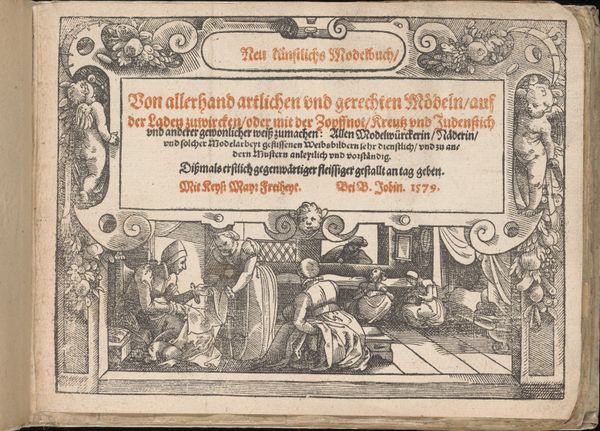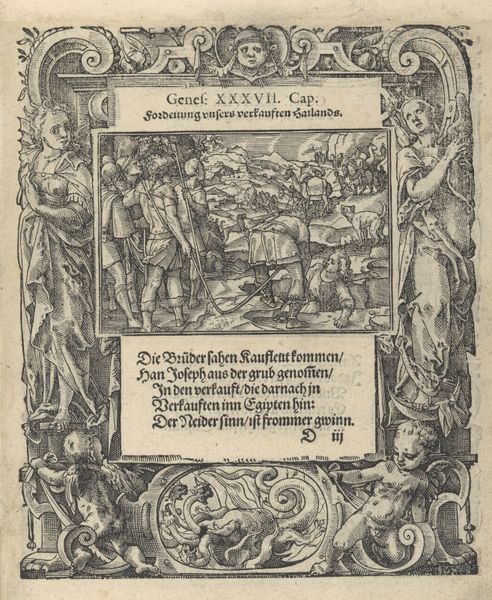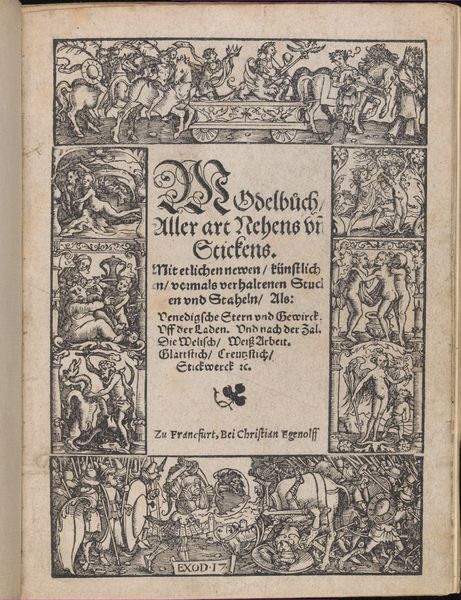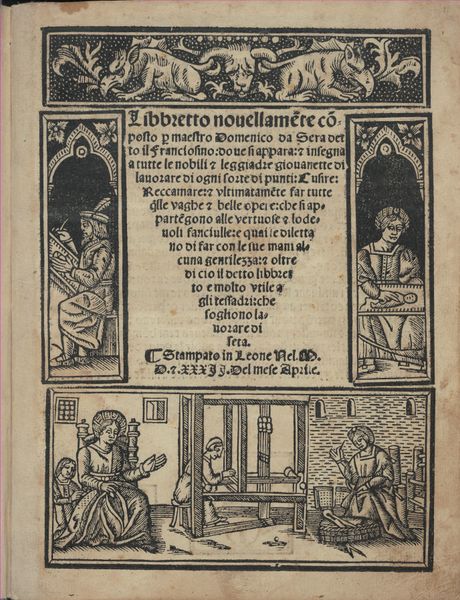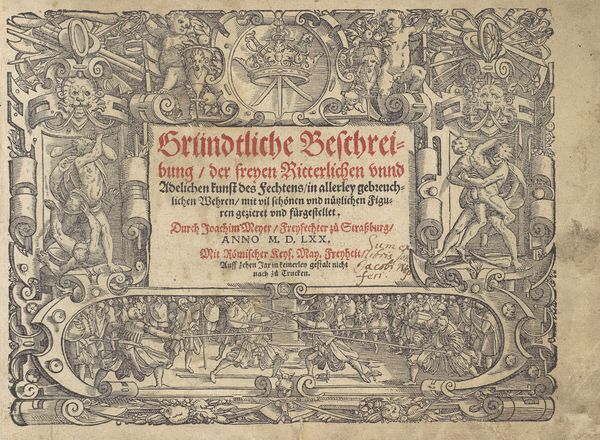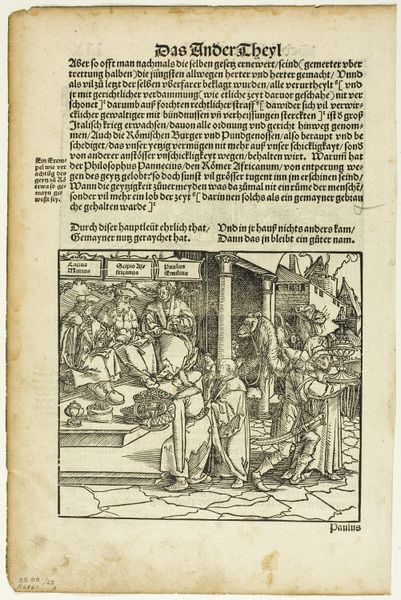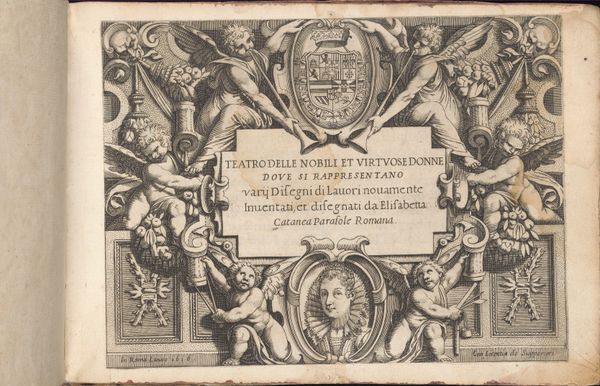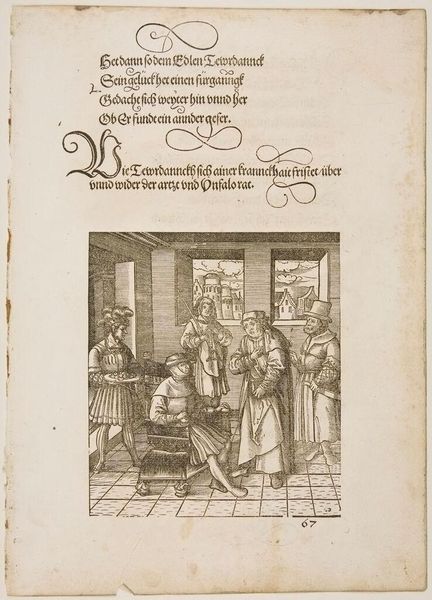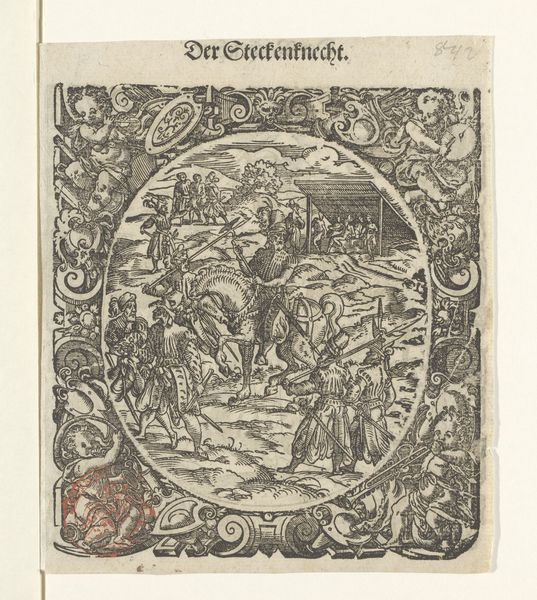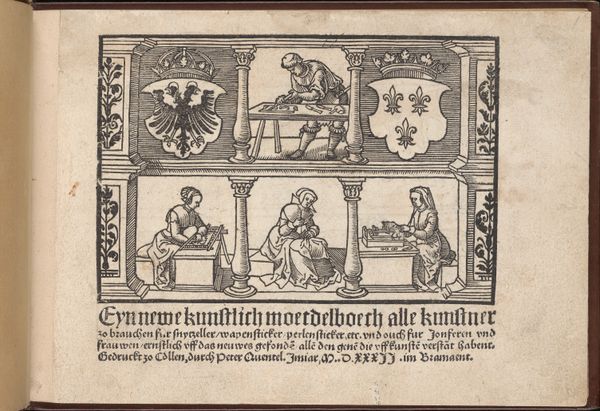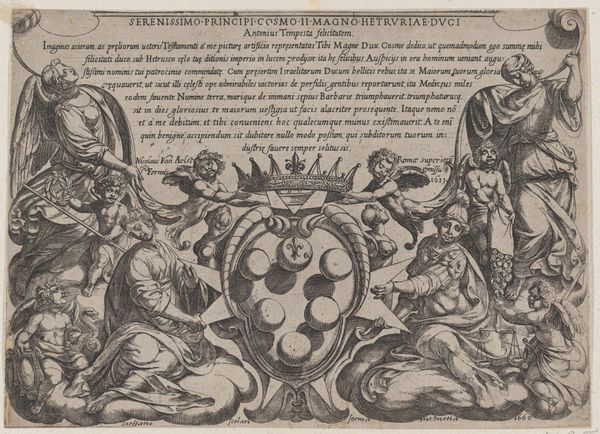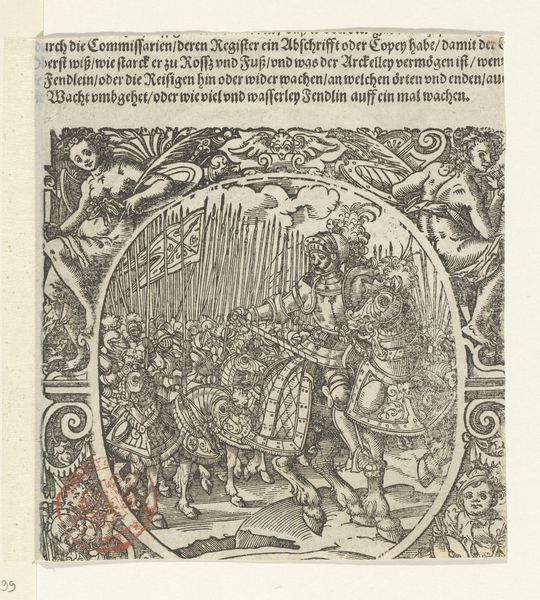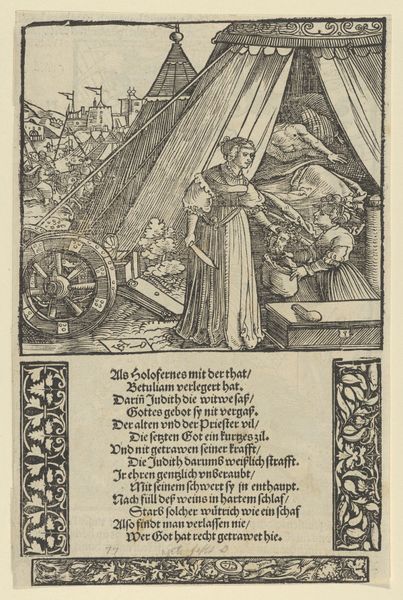
drawing, print, woodcut
#
drawing
# print
#
figuration
#
woodcut
#
genre-painting
#
northern-renaissance
Dimensions: Overall: 6 5/16 x 8 1/4 in. (16 x 21 cm)
Copyright: Public Domain
Curator: This intricate woodcut print from the year 1600, found in the Metropolitan Museum, is titled "New Künstlichs Modelbuch," and it comes to us from the hand of Bernhard Jobin. The Northern Renaissance style is clear. Editor: My eye is immediately drawn to the incredible detail—look at the busyness of the composition, the sheer variety of figures and domestic objects squeezed into this small space. It's both charming and overwhelming. Curator: Right! This image, or perhaps more accurately the book it represents, provides insights into the social structures of the era, showcasing the domestic roles of women and the economic importance of needlework. Modelbooks such as this were essential tools for artisans. Editor: Precisely. The symbolism here is abundant. Needlework, during this period, carried huge symbolic weight— representing not just domestic skill, but also female virtue, industriousness and even wealth, indicated by the quality of materials the women may have produced. I'd wager many could read that far simply through looking at what they wear. Curator: Model books such as this allowed for standardization of textile manufacture. Their creation and dispersal also speak to the emerging print culture, its democratizing force in society. Editor: Yet it also served as a tool of social stratification: access to these models might define the status of workshops or the aesthetic capabilities of particular homes. Look at the way these are styled. This domestic interior isn't the same that everyone was working in. Curator: Absolutely, these model books participated in larger power dynamics, reinforcing cultural norms and expectations for women in society. Notice how centrally positioned are all these ladies around what looks to be various weaving tools! Editor: I'm left contemplating how this seemingly simple image reflects complex narratives about skill, gender, class and technology. It reminds us that art is always deeply embedded in cultural history. Curator: Indeed, by understanding the historical contexts and the iconography behind pieces such as "New Künstlichs Modelbuch," we can unravel a broader tapestry of societal dynamics present throughout time.
Comments
No comments
Be the first to comment and join the conversation on the ultimate creative platform.
